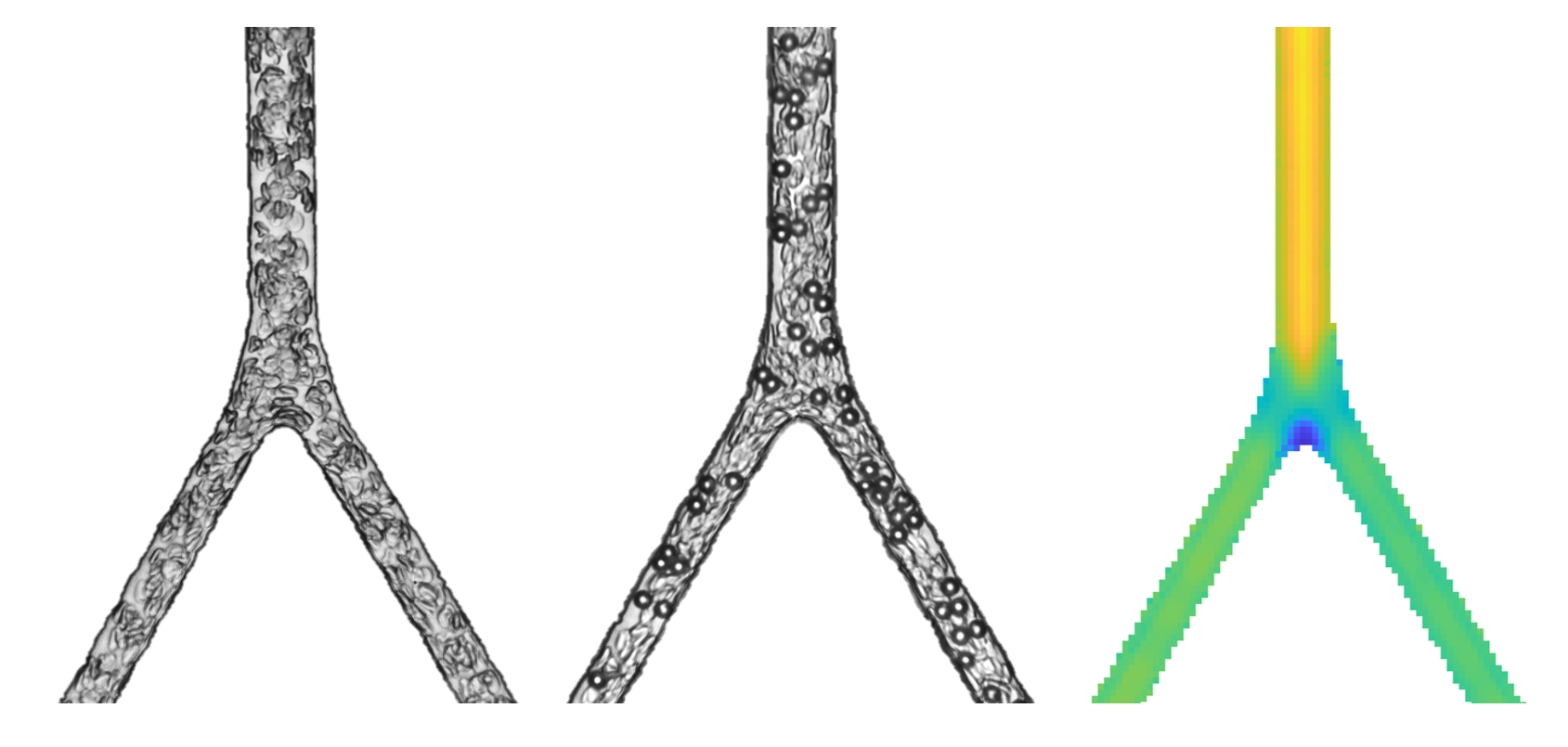Biomedical flows
How do particles advect in presence of red blood cells in bifurcating vessels?
Transport of concentrated particles in successively bifurcated vessels
In this project, we use both macroscopic and microscopic approaches to investigate the underlying physics governing particle transport in blood stream.

The flow features in branching networks are fundamental for the understanding of transport processes in respiratory and cardiovascular systems. Reaching a physical understanding of particle transport in bifurcating vessels is important for biomedical applications, such as tumor embolisation for liver cancer (a procedure that injects particles into a hepatic artery to block the blood supply to the tumor). In particular, targeting and efficacy of such treatment are highly determined by the distribution of embolic particles among the branching blood vessels as well as the mechanism behind particle clogging. Thus, we have developed macroscopic and microscopic experimental platforms to investigate the transport of particles in blood flow and the underlying mechanisms of particle clogging in blood vessels with the objective of optimising the efficacy of drug delivery.